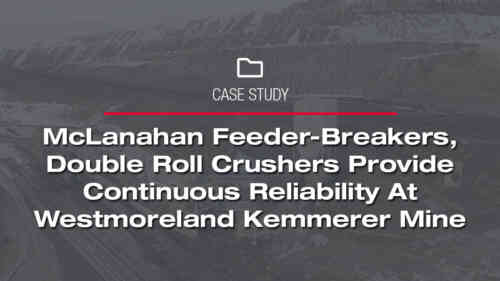Hi, I’m Adam Orner. I’m the Product Manager for Sampling Systems here at McLanahan Corporation, and we’re at the Lowe Street shop to take a look at a Horizontal Carriage Bottom Dump Sampler.

Primary Horizontal Carriage Bottom Dump Sampler in production.
We have the cutter oriented to the side of our drive carriage, which is why we call it horizontal carriage. It gives you the best low-profile setup that you could probably achieve with a falling stream machine.
The main drive unit is the piece that’s in front of us here, and that’s a chain-driven unit, so we’re basically driving a carriage back and forth using this chain drive.

Horizontal Carriage Bottom Dump Sampler chain drive unit.
This piece right here is the carriage, so as this chain goes back and forth with the drive, this carriage moves from end to end and moves the cutter back and forth through the falling material flow, which is on the other side.

The carriage is attached to the cutter and moves from end to end of the machine.
Here we are, we’re inside the process flow side of this horizontal carriage bottom dump machine, so you can see the inlet above us where material flow would be entering the machine and where the cutter would interact with that falling material flow.

The cutter is used for collecting the falling material.
You can see the cutter lips at the top of the cutter. You can see slots up there as well, and those things are designed to give you some flexibility as well as far as what your cutter opening is. You usually can get two or three, somewhere around in that neighborhood, inches of overall cutter opening variability, so if you decide you want to take a little bit bigger increment or a little bit smaller increment, you can do that by adjusting those cutter lips.

Adjustable cutter lips at the top of the cutter.
Down toward the bottom of the machine is the bottom dump door, so that’s why this is called a bottom dump sampler – just the style of the cutter that we have attached to the machine. When sample is collected as it passes through this inlet area, it’s held within the cutter and as that cutter gets overtop of the discharge point, there’s a cam that will push this door open and material will drop into the sample discharge, which is on the other side of the cutter.

Bottom dump door.
The door is counterweighted, so once the opening mechanism comes away from in contact with the cam, the counterweight will just pull the door back shut.
This is one of the door opening devices that the cutter opening arm would interact with to push the door open.

Door opening device.
Typically, when we take an increment, the machine starts from overtop the sample discharge point, comes out through the process flow, and we generally don’t keep that increment, so we’ll basically collect material and then dump it right away back into the process flow. Then, as the cutter passes back through the process flow, that would be the increment that we keep, and then that is what gets dumped into the sample discharge on the opposite side of the machine.









